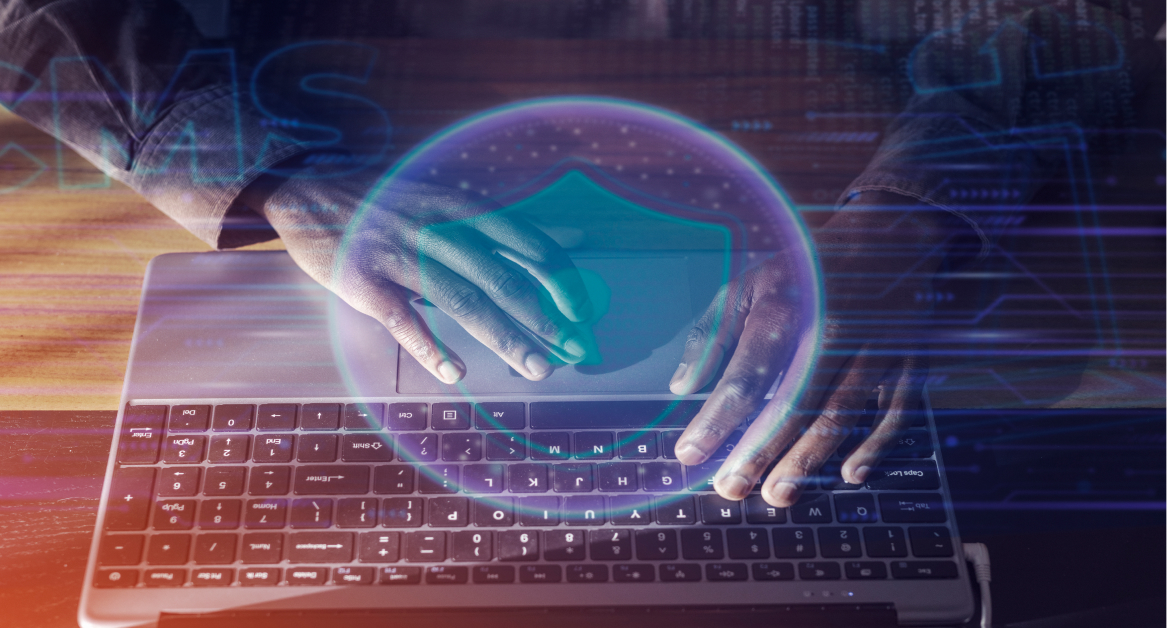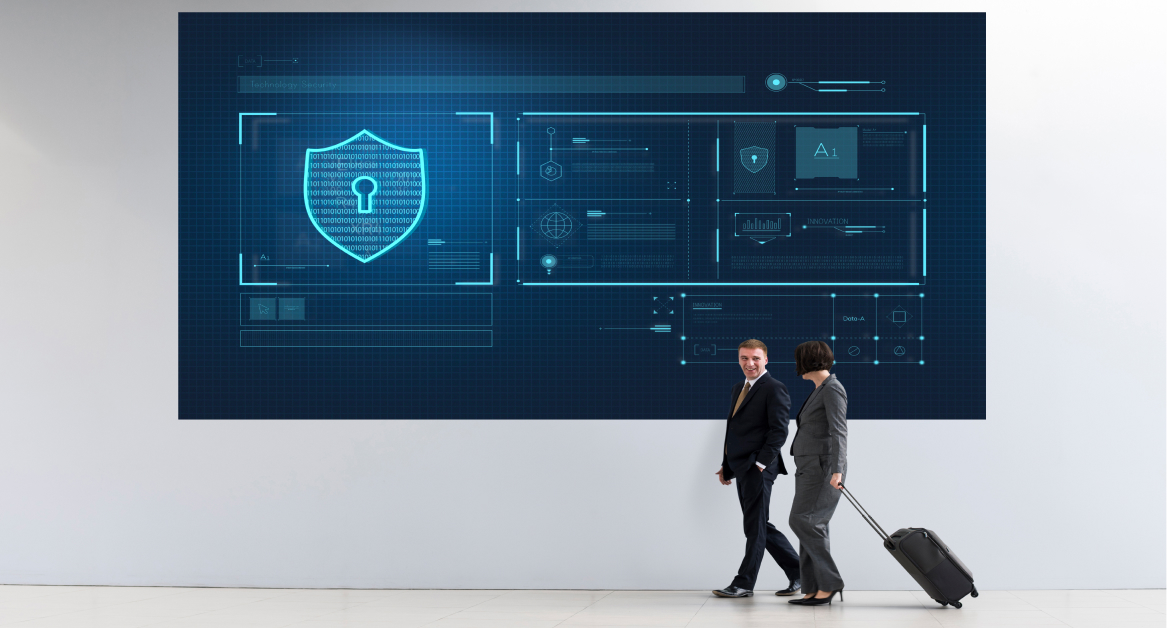When your team is spread across time zones, coworking spaces, and home offices, cybersecurity isn’t just an IT issue — it’s a business-critical priority.
Malware attacks can expose sensitive company data, drain resources, and destroy hard-earned trust. Whether it’s a sneaky spyware app or a full-blown ransomware breach, malicious software has evolved to target vulnerabilities across distributed teams.
And if you think your business is too small to be a target, think again. In 2020, small businesses faced over 700,000 attacks, resulting in $2.8 billion in damages (Source: SBA) – Startups and small businesses are often the most vulnerable — precisely because they’re less protected
That’s why investing in smart, real-time malware protection isn’t optional anymore. It’s the foundation for running a secure, efficient, and scalable operation in 2025.
What is malware (and why it’s important for remote businesses)
Malware, short for malicious software, is any program or code designed to harm, exploit, or otherwise compromise a computer system. It includes everything from viruses and spyware to ransomware and trojans. The goal? Steal personal information, disrupt operations, or gain unauthorized access to company systems.
For startups with hybrid or remote teams, the risk is amplified. Unlike traditional office environments, remote work relies on a wide range of networks, devices, and applications. And not all of them are properly secured. Employees may use personal devices, public Wi-Fi, or skip security protocols out of convenience. All of these factors open doors for cybercriminals.
Here’s why malware protection should be a top priority for remote businesses:
- Remote teams are more exposed
When employees work outside a centralized network, there’s less control over firewalls, antivirus software, and device policies. This creates gaps that attackers love to exploit. - BYOD policies can backfire
A bring-your-own-device (BYOD) policy can save money and boost flexibility, but without proper security tools, it can also become a gateway for malware apps to infect your system. - Cloud reliance increases attack surfaces
Most modern teams use cloud-based tools for communication, file storage, and project management. Without strong safeguards, malware can spread quickly across platforms and users. - Small businesses are low-hanging fruit
Many assume hackers only go after big enterprises. In reality, attackers often target smaller companies because they know defenses are weaker — and the payoff can still be big.
Malware can sit quietly in your systems, gathering data, tracking keystrokes, or opening backdoors for future attacks. It doesn’t always announce itself with flashing screens or obvious errors. That’s why real-time monitoring and anti-malware protection are so important. Waiting until something “seems off” is already too late.
Common ways malware enters business systems
You don’t need to click on anything shady for malware to sneak into your business. In fact, many threats look completely normal on the surface. Understanding how malware enters your systems is the first step to keeping it out.
Here are the most common entry points:
- Phishing emails and links
Still one of the biggest threats out there. A team member clicks on what looks like a legitimate email from a client or partner, and just like that, malware is installed. Some links trigger downloads instantly; others take users to fake login pages to steal credentials. - Infected downloads
Free software tools, browser extensions, or even a seemingly harmless PDF can carry malware. Many startups rely on open-source or freemium tools — and without proper vetting, these can become silent threats. - Outdated software and operating systems
Software that isn’t regularly updated is vulnerable to known exploits. Cybercriminals are quick to take advantage of businesses that delay patches or skip updates altogether. - Weak or reused passwords
Reusing passwords across accounts or failing to enable two-factor authentication can lead to major breaches. Once attackers get in, they can install malware that spreads throughout your network. - Personal devices and unsecured networks
When employees use their own laptops or mobile devices for work — especially on public Wi-Fi — it creates a huge opportunity for malware. Without proper monitoring, these entry points go unnoticed. - Malware apps disguised as legitimate tools
Some malware apps are intentionally built to look like productivity tools or utility software. Once installed, they start tracking activity, logging keystrokes, or opening backdoors into your systems.
Startups with distributed teams often have less centralized control over IT. That’s why smart companies are using license management software, single sign-on systems, and endpoint security solutions to reduce risk. These tools help standardize what’s installed, who can access what, and how systems are monitored — even if your team is scattered across five countries.
The best defense isn’t about having one perfect tool. It’s about creating layers of protection that keep the latest threats from ever getting close to your core systems.
What effective malware protection looks like
Malware protection isn’t just about installing antivirus software and calling it a day. With today’s fast-evolving threats, you need a smarter, more layered approach — especially when your team is remote or hybrid.
Here’s what a strong malware protection strategy looks like in practice:

1. Real-time monitoring and threat detection
Waiting for a weekly scan just doesn’t cut it anymore. Effective tools offer real-time protection that detects and blocks threats the moment they appear. That means your systems are constantly being scanned — not just once a day or once a week.
2. Automatic updates and patch management
One of the easiest ways for malware to get in? Exploiting known vulnerabilities. Good protection software keeps itself — and your systems — up to date automatically, so you’re not left exposed.
3. Centralized control over devices
Whether your team is using company-issued laptops or their own under a BYOD policy, you need visibility and control. Centralized device management helps ensure every endpoint is secure, compliant, and running the right tools.
4. Strong user access controls
Malware often spreads because someone clicked on something they shouldn’t have or had access to files they didn’t need. Limit user permissions and use single sign-on to control access. This reduces the damage any single breach can cause.
5. Behavioral analysis and AI-powered detection
Modern malware can change its signature to evade traditional detection. The best anti malware protection tools now use behavior-based analysis and machine learning to flag suspicious activity — even if it hasn’t been seen before.
6. Quick response and removal tools
Even with the best defenses, something may still slip through. That’s why having tools that can quickly isolate and remove malware is critical. Look for solutions that can scan devices remotely, quarantine threats, and roll back changes if needed.
7. Employee education and awareness
Technology alone can’t stop every threat. Your team is your first line of defense. Regular training on how to spot phishing attempts, avoid malware apps, and protect personal information can go a long way in keeping your systems clean.
Choosing the right malware protection solution
Here are a few key questions to help guide your decision:
Does it offer real-time protection?
The best solutions don’t wait for scheduled scans. They block and alert you to malware in real time, stopping threats before they can do damage.
Can it cover all your endpoints?
If your team is remote or hybrid, you’re probably managing a mix of devices, operating systems, and locations. Your solution should protect all endpoints — whether company-issued or BYOD — with minimal setup.
How well does it integrate with your stack?
Look for tools that play nicely with what you already use. Integration with license management software, single sign-on systems, and cloud productivity tools makes your whole security setup more seamless and less stressful.
Is it scalable and cost-effective?
Startups need solutions that grow with them. You don’t want to outgrow your security stack in six months. Choose tools that are flexible and offer pricing that fits your team size and budget.
What kind of visibility and control do you get?
Can you see device status at a glance? Remotely scan or remove malware? Block suspicious activity before it spreads? These are non-negotiables for modern teams working across multiple locations.
Is support responsive and knowledgeable?
You don’t want to wait 48 hours to hear back when something goes wrong. Check if the provider offers fast, knowledgeable support — ideally with options for real-time help.
Does it align with your company’s BYOD policy?
If your team uses personal devices for work, you need a solution that protects company data without overstepping into employees’ personal information. Privacy-friendly, lightweight agents are key.
Stay ahead of threats with the right protection
Malware isn’t slowing down — and neither should your business. As cyber threats evolve, so must your approach to staying secure. Whether it’s phishing emails, malware apps, or vulnerabilities in personal devices, remote teams face unique risks that require more than a one-size-fits-all solution.
The good news? You don’t have to figure it out alone.
Esevel helps you build a smarter, more secure IT environment — without the complexity. From deploying real-time malware protection to managing your entire device fleet, we make sure your team is protected, productive, and ready to scale.
Don’t wait for an attack to find out where your gaps are.







